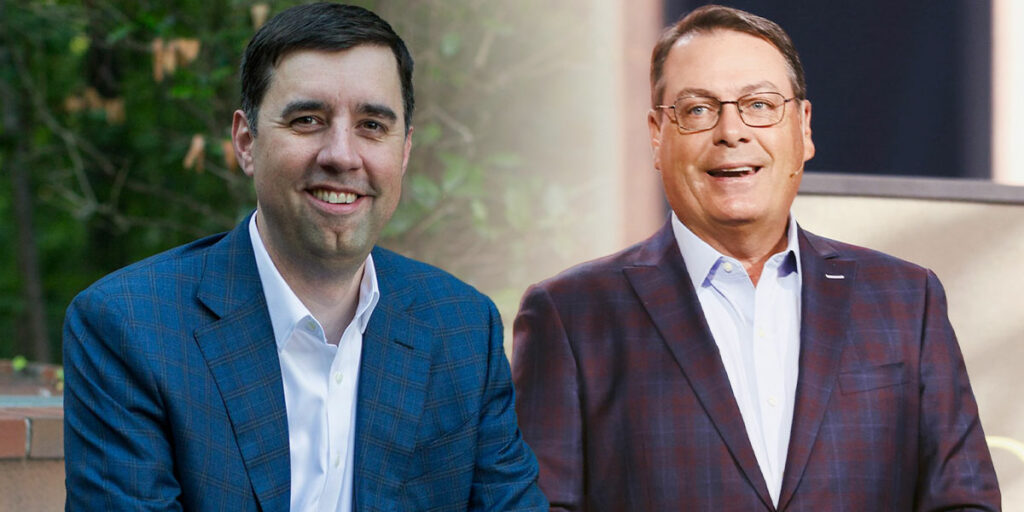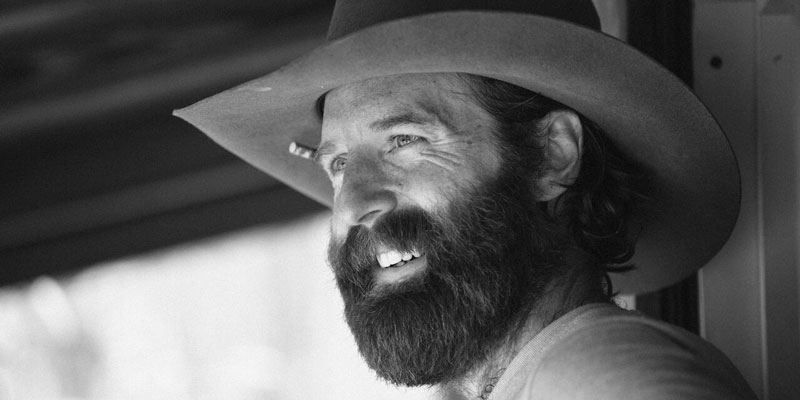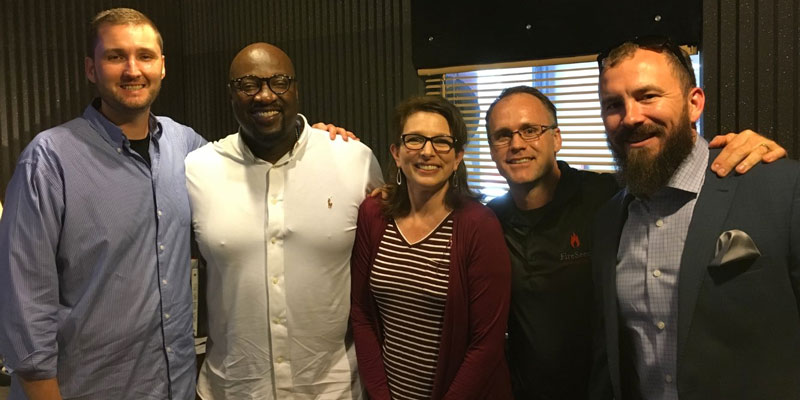Cord Sachs is a Birmingham-based leadership expert and the CEO of FireSeeds, a company that helps companies find and grow great leaders and “the company behind many of Alabama’s fastest growing companies.”
The full conversation with Mr. Sachs can be heard on the Yellowhammer Radio podcast or in the video above, and a lightly edited transcript of his interview with Yellowhammer’s Andrea Tice and Scott Chambers can be read below.
Subscribe to the Yellowhammer Radio Podcast on iTunes. Learn more about Cord Sachs and Fireseeds at www.fireseeds.com
Scott Chambers: Welcome back, Yellowhammer Nation. It’s Yellowhammer Radio. She is Andrea Tice. I am Scott Chambers. Our guest, as every Tuesday, Mr. Cord Sachs, from FireSeeds. How in the world are you, Cord?
Cord Sachs: Yes, sir. Doing great, Scott, Andrea.
Andrea Tice: Hi.
Cord Sachs: Beautiful weather.
Andrea Tice: Yes. It is a gorgeous day. We’ve had several, couple of days, that have been absolutely fantastic.
Cord Sachs: Absolutely. Yeah, I’m doing great.
Scott Chambers: Good, man. Glad to have you here. I understand, that you guys have launched a really cool new product deal at FireSeeds, called Culture Benchmark. I want to know … Tell me a little bit about Culture Benchmark.
Cord Sachs: Yeah. No, that’s great, Scott. Yeah. We launched this Culture Benchmark, so that we could help organizations assess their culture. Let me define culture real quick, because I want this to be applicable, really, to anybody. Culture, is the particular characteristics of any group of people. Whether this is a whole organization, whether this is just a team that you work within it at your work place, or whether this is your family, every subgroup has their own culture. We want to help companies assess their cultures, so we created this FireSeeds Culture Benchmark, to launch a survey into an organization.
We start by surveying the executive team. We ask them questions around eight areas of culture. Then, we assess everyone in the grass roots separately because, really, what we want to see … It’s great to see what our leadership teams say about the health of their culture, but really, what we want to know is, what are the people in the grass roots say about the health of our organizational culture? We learn a lot by quantifying numerically, a grading scale around eight areas of culture, and seeing how the leadership team grades it out, compared to those that work in the grass roots.
Andrea Tice: Okay. You mentioned eight areas in that discussion. What would those eight areas be, and why are you … Tell me how you came to that conclusion, that you needed to evaluate those eight areas.
Cord Sachs: Well, when we asked organizations, “Hey, tell me how you’re doing. How’s your organization doing?” I mean, they’re quick to give us their quarterly revenue, compared to last quarter or compared to last year, or their profit and loss. When we ask them, “Well, tell me about your culture. How would you grade your culture?” Many of them kind of look with a blank stare, because they haven’t yet developed a grid, a way of thinking, about evaluating their culture. All the areas that they’ve already traded metrics for, their systems and their processes, that have metrics, those are good. The mighty dollar’s gonna drive the health of those things. What we’ve done, is we’ve created a way to quantify and grade out eight areas, that we would say, kind of bump right up against the systems and processes that-
Andrea Tice: Okay.
Cord Sachs: Oftentimes, an organization have no metrics around them. The eight areas are this.
Number one would be vision, mission, and values, really assessing the organization’s clarity around their vision, mission, and values.
Number two, communication. How is your communication, your informal and formal channels of communication, within the organization?
Number three, the team dynamics. What’s the actual health of the team, and the synergy, within the teams of your organization. Number three.
Number four, would be we’re gonna assess the training and leader development. Do your people feel as if they’re being continually trained and developed, in the skills to help them do their job better? Then are they developed as a leader? Number four.
Number five, will be an area called empowerment. We talk to a lot of organizations, and the people are very frustrated, because they are not empowered. Rather, they are micromanaged. Understanding whether you have … Whether, you’re an organization that empowers your people, is very important.
Number six, recognition and celebration. Great companies, with healthy cultures, recognize people for great work, and they celebrate the areas of their culture that are strong. They celebrate wins. We want to put some numbers around, some metrics around, recognition and celebration.
Number seven, would be energy and engagement. We say a direct line to maximizing the productivity, is how engaged, and how much does your work environment provide energy, for your people to come to work and thrive. That’s number seven.
Number eight, would be compensation and career opportunities. If your people feel this, they’re going to tell you the honest fair market wage, for the work that they do. More importantly, do they feel like they know and understand the opportunities they have, within your organization?
Andrea Tice: All right.
Cord Sachs: Eight areas.
Andrea Tice: Cord, that’s really good. I have a followup question on that. Because, you mentioned, that you do two different types of surveys. You do the upper leadership and management, and then those down at the grassroots level.
Cord Sachs: That’s right.
Andrea Tice: Now, do you feel that with … When you were doing these tests, because the people know that leadership is also getting surveyed, are they able to answer honestly, when you ask them to evaluate their company culture?
Cord Sachs: That’s a great question. First and foremost, we make sure it’s very clearly communicated, that these are going to be extremely anonymous … An anonymous survey.
Andrea Tice: Okay.
Cord Sachs: And then, the leadership team, makes it very clear that we are asking everyone to speak very candidly, to speak very openly. It’s the only way we can really know, and really be able to listen to how you really feel. As long as the leadership team communicates that to their people, and their people know that, hey it’s going to be anonymous. An outside party, FireSeeds, is going to come in and run the whole thing, and we won’t know who’s saying what. But we want to listen, we want to hear what you have to say. As long as that’s authentic, then it works really well. We get some really candid feedback, and candid results.
Scott Chambers: Well, Cord, I’ve got to know, how do people actually practically apply this? What they’ve learned, to make practical improvements to their culture at their company, when using this?
Cord Sachs: Right. So what we’re able to dive into each of those topics, there’s going to be five different questions around each of those areas. The first question for vision, mission, and values, might just be, have the mission, vision, and values been clearly explained to you, during your time at work with this organization? Question two might be, do you see your vision, mission and values lived out within the organization?
So, two very different questions, but similar enough, to where we can really understand, well maybe it’s clearly communicated in our onboarding, but then it’s not lived out. It’s not repeated, it’s not being brought in front of them more. So, we’re able to really pinpoint, within any one of those categories, a very clear place that they might need to work on that category. Whether it’s communication, whether it’s empowerment, team dynamics.
Then, we try not to overwhelm the organization by saying, “Okay, you’ve got to come up with a plan to fix it all.” We would just say; “Hey, let’s come up with three areas. Let’s come up with one primary area, that we could act on immediately.”
Andrea Tice: Okay.
Cord Sachs: We do this within our own company. Within vision, mission, and values, one of the questions was, are you reminded regularly about your vision, mission, and values? Honestly, just three years ago, my folks said, “No, we wish you would put those in front of us more.” So, one primary action step we took, super simple, was that next week, we said, “Hey, we hear you. And we want to do a better job at that.”
I had our marketing director, Dave, plan out very … A really nice and brand succinct way, all of our vision, mission, and values. We put them up around the office and in front of our folks, and created screen savers around it. It did two things. Number one, they felt like they really were heard, and they saw us take action. We didn’t have to fix everything immediately, but we were able to move and take action on one thing. Then tell them, “Hey, and there’s lots of other areas that you gave us feedback on. That we’re also going to be working towards, over the next six months to a year. To really work on improving.”
We really try to help them come up with a primary, secondary, and tertiary area of practical application, where they can begin to start thinking about, how can we improve a few of these areas at a time?
Andrea Tice: Wow. That sounds great.
Scott Chambers: Well, you know, Cord, here at YellowHammer, we absolutely love FireSeeds, and we use some of your models and they’re fantastic. But, what are some of the organizations saying, about the results that they’re getting?
Cord Sachs: It’s been awesome, because … I think I can share this, we worked with a great company called, The Alabama Eye Bank, right here. They find and match eye donors, with those that need eyes. It’s an unbelievable cause. We got to work with their organization, really over this last month, and we ran our Culture Benchmark. They were honestly a little hesitant, they didn’t know how their people would respond, and being able to get feedback around these areas. They’d never done anything like this before.
Andrea Tice: Right.
Cord Sachs: They were blown away at how their people felt appreciated, because they had a voice around the areas, that really did make up so much of the experience around their work. Just by giving them the opportunity to speak in, it already improved the culture within the organization.
Scott Chambers: Man, that’s incredible.
Andrea Tice: Very exciting stuff, Cord. Very neat. Go ahead, and tell people how to get ahold of you, at FireSeeds.
Cord Sachs: Absolutely. FireSeeds.com. Check us out online, you can read about our recruiting, our leader development, now our new offering called the FireSeeds Culture Benchmark. We’d love to serve you and your family.
Scott Chambers: All right, check it out, FireSeeds. We appreciate you, Cord Sachs, and we look forward to talking to you again, next Tuesday. We’ll see you guys tomorrow. God bless. Have a great day. Andrew McLean is next.













